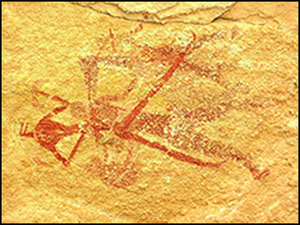Crossref Citations
This article has been cited by the following publications. This list is generated based on data provided by
Crossref.
Polkowski, Paweł Lech
2018.
Encyclopedia of Global Archaeology.
p.
1.
Dachy, Tiphaine
Briois, François
Marchand, Sylvie
Minotti, Mathilde
Lesur, Joséphine
and
Wuttmann, Michel
2018.
Living in an Egyptian Oasis: Reconstruction of the Holocene Archaeological Sequence in Kharga.
African Archaeological Review,
Vol. 35,
Issue. 4,
p.
531.
Honoré, Emmanuelle
2019.
Prehistoric landmarks in contrasted territories: Rock art of the Libyan Desert massifs, Egypt.
Quaternary International,
Vol. 503,
Issue. ,
p.
264.
Lüning, S.
and
Vahrenholt, F.
2019.
The Geology of the Arab World---An Overview.
p.
507.
Polkowski, Paweł Lech
2020.
Encyclopedia of Global Archaeology.
p.
3635.
Martínez-Sevilla, Francisco
Arqués, Meritxell
Jordana, Xavier
Malgosa, Assumpció
Lozano Rodríguez, José Antonio
Romero, Margarita Sánchez
Sharpe, Kate
and
Rus, Javier Carrasco
2020.
Who painted that? The authorship of Schematic rock art at the Los Machos rockshelter in southern Iberia.
Antiquity,
Vol. 94,
Issue. 377,
p.
1133.
Hamdan, Mohamed A.
Lucarini, Giulio
Tomassetti, Maria Cristina
Mutri, Giuseppina
Salama, Walid
Hassan, Safiya M.
and
Barich, Barbara E.
2021.
Searching for the Right Color Palette: Source of Pigments of the Holocene Wadi Sura Paintings, Gilf Kebir, Western Desert (Egypt).
African Archaeological Review,
Vol. 38,
Issue. 1,
p.
25.
Dupuy, Christian
2023.
Réflexions sur la rareté des images d’enfants dans l’art rupestre du Sahara.
Journal des Africanistes,
Vol. 93-1/2,
Issue. ,
p.
86.
Ismael, Hossam
Abbas, Waleed
Ghaly, Heba
and
El Kenawy, Ahmed M.
2023.
Echoes of the Past: Unveiling the Kharga Oasis’ Cultural Heritage and Climate Vulnerability through Millennia.
Heritage,
Vol. 6,
Issue. 9,
p.
6397.
Peroschi, Maria Emilia
and
Cambieri, Flavio
2023.
The Unnamed Plateau (Western Desert of Egypt). New geological and geoarchaeological data from an exploration in a remote area.
Natural History Sciences,
Vol. 10,
Issue. 1,
Heine, Klaus
2024.
The Quaternary in the Tropics.
p.
91.
Delannoy, Jean-Jacques
David, Bruno
and
Genuite, Kim
2024.
Deep-Time Images in the Age of Globalization.
p.
147.
